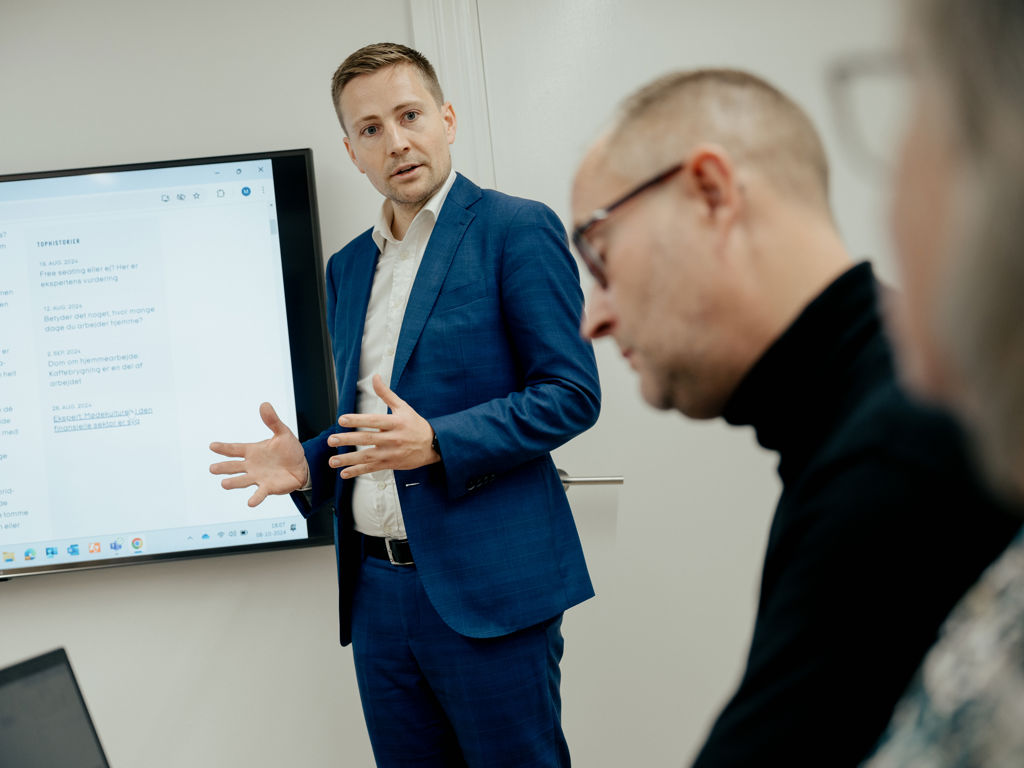The answer will always echo the question
In this editorial, Dorrit Brandt, president of Finansforbundet in Nordea, points out that Nordea chooses to measure in a way so it fits the storytelling.
A few weeks ago, the People Pulse Q1 survey ended up in my mailbox. Personally, I am glad that the cadence has changed from one to four times a year. But this time, I felt a little cheated on. ‘Do you want to recommend Nordea as a workplace ?, - as a bank ?, - and do you feel valued as an employee?’. Three really good questions that I scored high. But having pressed "Next" after the third question, I got the message: 'Thank you for your answer' - and then the survey closed.
Afterwards, I felt a bit empty. Were these three answers a full expression on how I feel? How everyone is feeling? How we look at Nordea? In my opinion, the nuances are lacking.
The Excel sheet lacks columns
When I think it over, it often happens: The answers reflect the way the question was made. Most SOP’s are about how to get from A to B as fast as possible. What is the task? What is the delivery? When is the deadline? All arranged in Excel columns. But where is the column for the ability to independently assess a situation and respond to it? The column for the added value that a relationship can provide? Often the column of common sense is absent as well. The courage to take a small detour which contributes to valuable learning and greater benefits is also not measured.
All too often, the columns for relationships, collaboration, learning and judgment aren’t there. And what is not measured, does not count.
The scale changes
Benchmarking is frequently used to measure e.g. customer satisfaction, cost ratios and number of employees. But we don’t use the same benchmark all the time. If it's about showing that Nordea is well-capitalized, we measure ourselves against the European banks - and we perform really well there. Our cost ratio is at the low end, compared to the same banks. But hey: Now the scale has changed. Because, when we talk cost ratio, Nordea instead measure itself with its Nordic peers - and then all of a sudden we don’t perform so well. Quite the contrary.
Too heavy at the rear end
Let’s look at the business models. At Nordea, we have spent the past 10 years centralizing much of the administrative work, formerly done by advisers close to the customers. Today, advisers’ calendars are expected to be filled up with customer meetings, consulting, and sales that increase earnings, while all non-customer-facing work is performed in the back-office. It may make good sense.
But now a new benchmark appears: We have become too heavy at the rear end compared to our peers. In terms of numbers, more people in Nordea work in central functions compared to our peers. But are we absolutely sure that the business models are completely comparable? If even a little bit of the back-office tasks were in the front-end, would we still be too heavy at the rear? Once again, the storytelling fits the chosen cost focus. If you search long enough, you’ll get an answer that perfectly suits the purpose.
Now I'm just waiting for the People Pulse results to come out. If others have answered the same as me, then I can already see the positive results bent in neon. And once again, the answer can be adapted to the situation: A tight cost focus has increased Nordea's employee satisfaction!
But is that really true?
Dorrit Brandt,
President, Finansforbundet in Nordea





